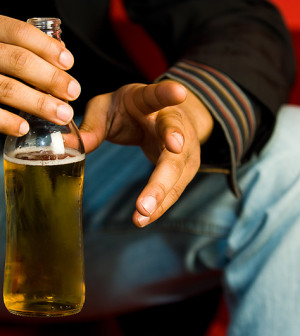- Double Mastectomy May Offer No Survival Benefit to Women With Breast Cancer
- Toxic Lead Found in Cinnamon Product, FDA Says
- Certain Abbott Blood Sugar Monitors May Give Incorrect Readings
- Athletes Can Expect High Ozone, Pollen Counts for Paris Olympics
- Fake Oxycontin Pills Widespread and Potentially Deadly: Report
- Shingles Vaccine Could Lower Dementia Risk
- Your Odds for Accidental Gun Death Rise Greatly in Certain States
- Kids From Poorer Families Less Likely to Survive Cancer
- Tough Workouts Won’t Trigger Cardiac Arrest in Folks With Long QT Syndrome
- At-Home Colon Cancer Test Can Save Lives
One in 25 Reports Falling Asleep at the Wheel: CDC Report


In a new government survey, one in 25 U.S. drivers said they had fallen asleep at the wheel a least once over the prior month.
The study found those most at risk for having accidents while driving drowsy are those under 25, males, people who binge drink, people who don’t wear seat belts, folks with sleep problems, and, not surprisingly, those who regularly sleep less than five hours a night, according to the U.S. Centers for Disease Control and Prevention.
“About 4 percent, or one in 25 people, reported falling asleep while driving in the month before the survey,” said lead author Anne Wheaton, a CDC epidemiologist.
The problem is worse among people who sleep less than they should. In fact, most drowsy driving occurs early in the morning or late at night “when your body is telling you, you should be in bed,” Wheaton said.
As many as 7,500 fatal motor vehicle accidents in the United States might be caused by drowsy driving each year, she said. Many of these are single car accidents, according to the AAA Foundation for Traffic Safety.
You don’t have to fall asleep to be a danger if you’re tired at the wheel, note the study authors. Drowsy drivers have slower reaction time, poorer judgment and vision, as well as difficulty processing information, according to the National Sleep Foundation. Drowsy drivers are also likely to be less vigilant and motivated and more moody and aggressive, the sleep group says.
Although the report only covers 10 states and Puerto Rico, Wheaton said other states report similar statistics, so she believes these data are applicable throughout the country.
The finding that binge drinkers are more likely to drive while drowsy is particularly troubling. Drinking is a double-edged sword, Wheaton said. “Alcohol amplifies the effect of drowsiness, but also if you’re drowsy, it doesn’t take as much alcohol for you to be impaired,” Wheaton said.
Wheaton doesn’t know if there is more drowsy driving than there used to be, but she is sure the problem isn’t going away.
“We do know that people are getting less sleep than they used to. You’ve got people who have really long commutes. And we think that the prevalence of sleep apnea is also increasing, because it tends to go along with obesity, and we know that that’s increasing. So it’s [drowsy driving] definitely not going down,” she said.
Wheaton’s advice: “Get enough sleep.” In addition, don’t drink and drive, see a doctor if you have a sleep disorder, and always wear a seat belt, she said.
The study authors also noted that interventions to prevent drowsy driving aimed at young men might be helpful, as this group has a higher risk of drowsy driving.
If you find yourself nodding off at the wheel, the researchers recommended getting off the road and getting some rest. “Turning up the radio, opening the window, and turning up the air conditioner have not proven to be effective techniques to stay awake,” they wrote.
The findings were published July 4 in the Morbidity and Mortality Weekly Report.
More information
For more information on drowsy driving, visit the National Sleep Foundation.
Source: HealthDay
Copyright © 2024 HealthDay. All rights reserved.










